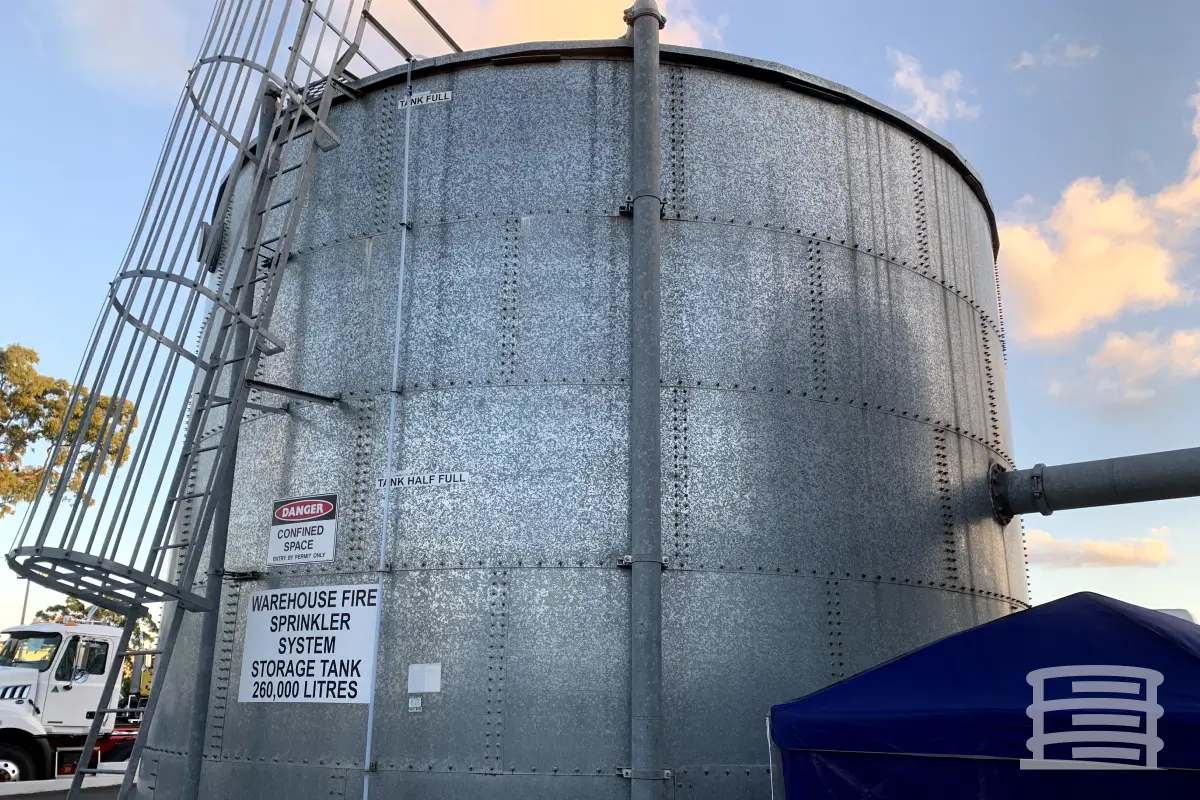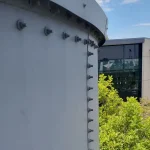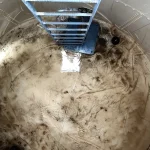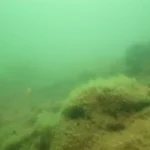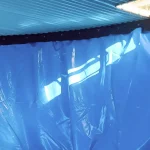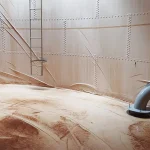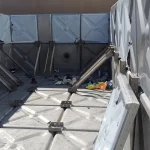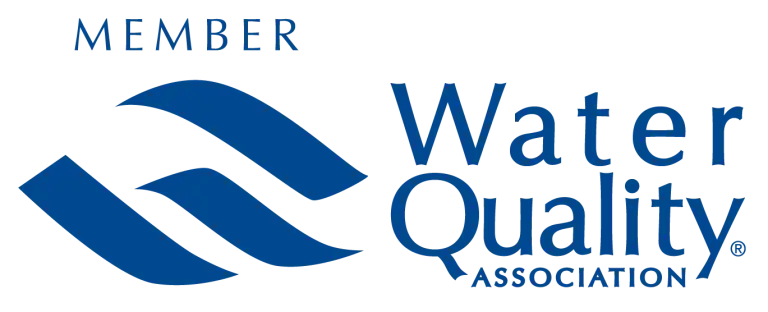When procuring a water storage tank, the process of configuring and selecting the appropriate tank typically begins early in the project design phase. Considerations such as the construction schedule and overall project expenses are factored in when seeking and securing available funding. Given that many municipalities rely on a single water storage source, the tank’s design plays a crucial role in meeting both current and future community needs.
Several key factors, including community water demands, site conditions, pressure requirements, long-term maintenance considerations, accessibility, and overall expenses, must be evaluated during the final selection of the tank configuration process.
For municipal water storage applications, three types of liquid storage tanks are commonly available: glass-coated bolted steel, welded painted steel, and concrete.
- Manufacturing Process
The technology and manufacturing procedures of this equipment distinguish it from painted steel or concrete structures. Unlike field-manufactured products such as painted steel or concrete tanks, the factory manufacturing process eliminates uncontrolled variables. Factors like worker experience and extreme climatic conditions, which have been known to significantly affect in-field manufactured products, have minimal impact on the glassing process. Moreover, since the tanks are manufactured in the factory and only require assembly of components in the field, they can be erected throughout the year.
- Coating
All storage tanks undergo coating processes, with options including paint, concrete, or glass. Glass coatings offer distinct advantages due to their impermeability and properties.
The glass coating procedure begins with a glass frit, which is mixed with other minerals and water to create a liquid slurry. This slurry is then meticulously sprayed in precise amounts and thicknesses onto pre-cut and rolled steel sheet panels, which have undergone punching, grit-blasting, and cleaning processes.
In contrast to coatings for other tanks that rely on a mechanical bond with the underlying material, the chemical bond strength of glass coatings is significantly higher. This chemical bond prevents the undercutting of the coating, which could otherwise lead to corrosion spreading on the primary steel material. To illustrate, consider a scratch on a car. With a coating that only has a mechanical bond, corrosion would occur upon steel exposure. If left untreated, this corrosion would extend beneath the surrounding painted surface, compromising the remaining coating.
Common signs of this issue include raised bubbles, spreading rust, and weakened substrate. However, the chemical bond of a glass-fused-to-steel coating prevents corrosion from spreading even if the coating is compromised.
- Tank Construction
During the assembly of a glass-coated bolted steel storage tank, a jacking system is utilized. Initially, the tank’s top ring is assembled on the jacks, followed by the placement of the starter sheet (bottom ring), which is either embedded in the concrete foundation or constructed using a glass-fused-to-steel floor design. Subsequently, the tank’s roof is installed, and both the ring and roof are elevated using jacks. Each subsequent ring is then bolted together beneath the top ring, with a urethane sealant applied between the seams.
The tank construction follows a top-down approach, facilitating a safer and more efficient assembly process. Typically, the erection process is completed within a week or two, resulting in cost savings for the owner, especially when utilizing prevailing wages for onsite labor. Moreover, the manufacturer requires all construction crews to undergo factory training and certification in the erection process, ensuring quality control during field operations.
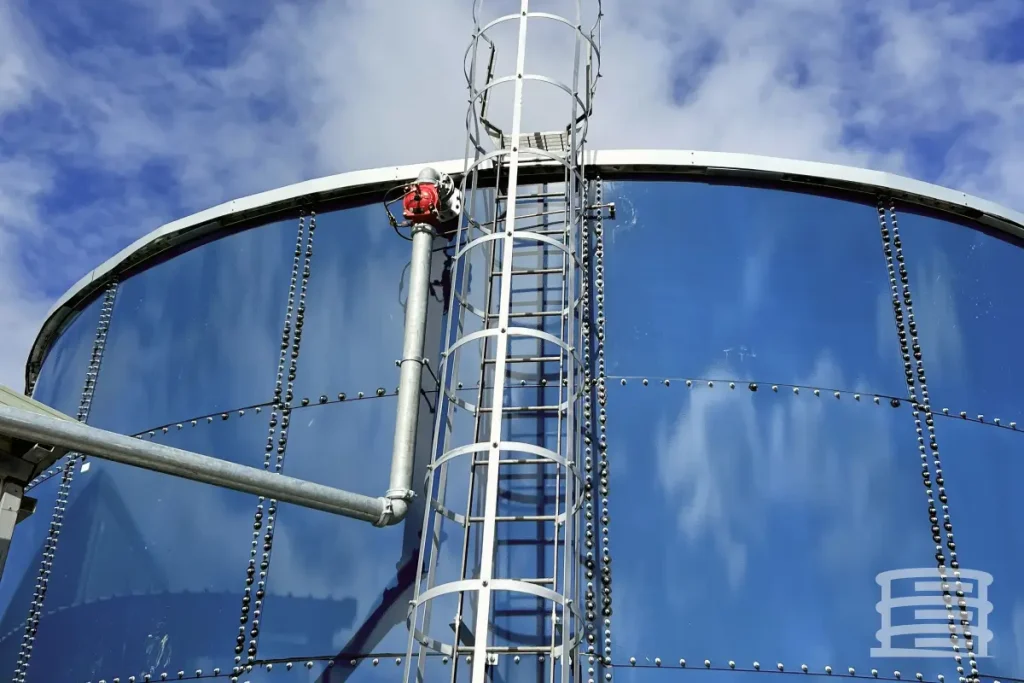
- Maintenance
Glass-coated bolted steel tanks boast an extended lifespan due to their permanent glass coating, eliminating the need for periodic painting. These tanks are often preferred in locations where a durable and aesthetically pleasing appearance is desired over the long term.
- Flexibility
The bolted design and assembly process of this product offer considerable flexibility. Unlike on-site manufacturing, which requires extensive staging areas, production in a factory eliminates this requirement. Typically, the construction of the tank can be achieved with a minimal cleared space of 6 to 10 feet around its diameter. This compact footprint not only saves significant project costs but also reduces the overall expenses associated with the tank. Furthermore, the panels are lightweight and can be assembled manually without the need for cranes or specialized equipment, enabling installation in locations that would be inaccessible for other tank types.
- Scalability
The glass-coated bolted tank design allows for vertical expansion. Should community or industrial growth demand increased capacity, the tank’s jacking process provides a swift and economical solution. A construction crew trained by the factory can readily undertake this procedure by detaching the bottom ring from the original starter sheet, elevating the tank, and incorporating the required number of rings to accommodate the augmented capacity. Significantly, when these tanks undergo expansion, there is no visible differentiation between the original and added panels.
Conclusion
When assessing tank designs and materials, it’s vital to take into account factors such as initial construction costs, anticipated lifespan, and ongoing maintenance expenses. Evaluating long-term maintenance costs and the product’s life cycle is critical when selecting the ideal solution for a specific project. Given that project funding can fluctuate due to various factors, conducting a thorough analysis of upfront expenses and potential future maintenance savings can assist communities in determining the most appropriate product for their needs.
If you’d like further elaboration on any of the points discussed here, our friendly and knowledgeable customer service team is available to assist you. We offer reliable services in Houston, Texas, and Long Beach, California, backed by extensive experience.
Call NFPA 25 Inspections by American Tanks at +1 800 656 0167
Or email at info@nfpa25inspections.com
